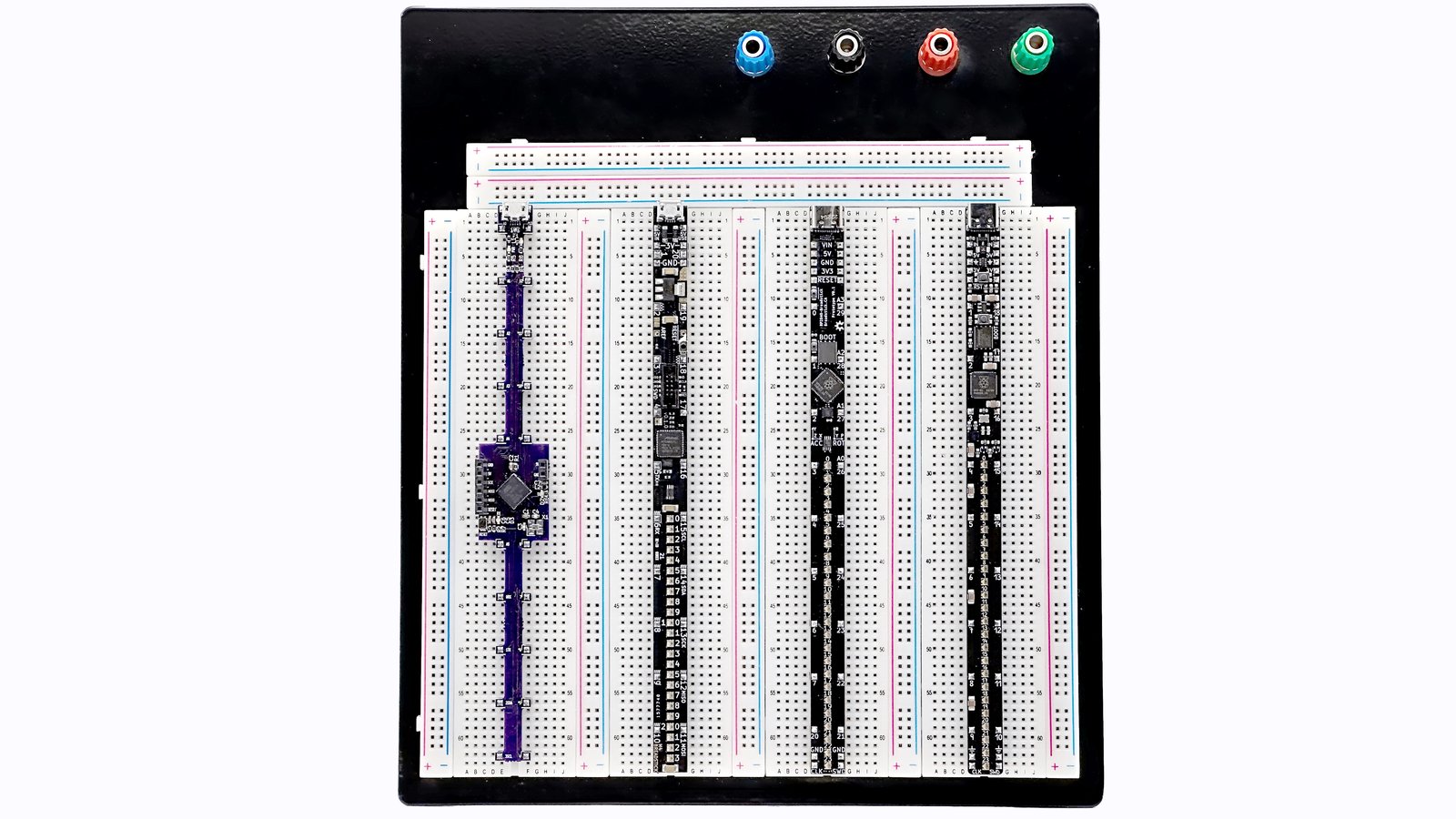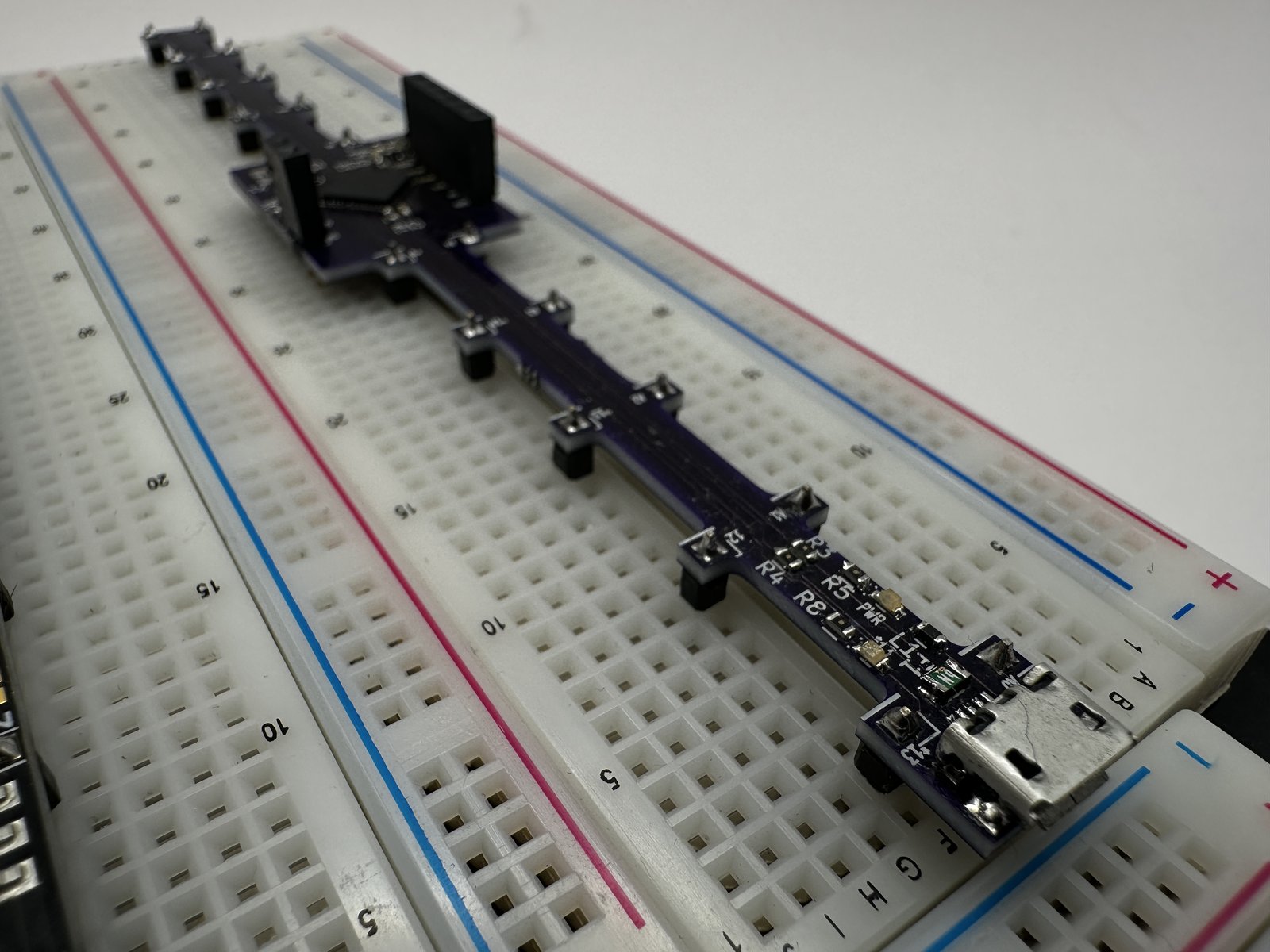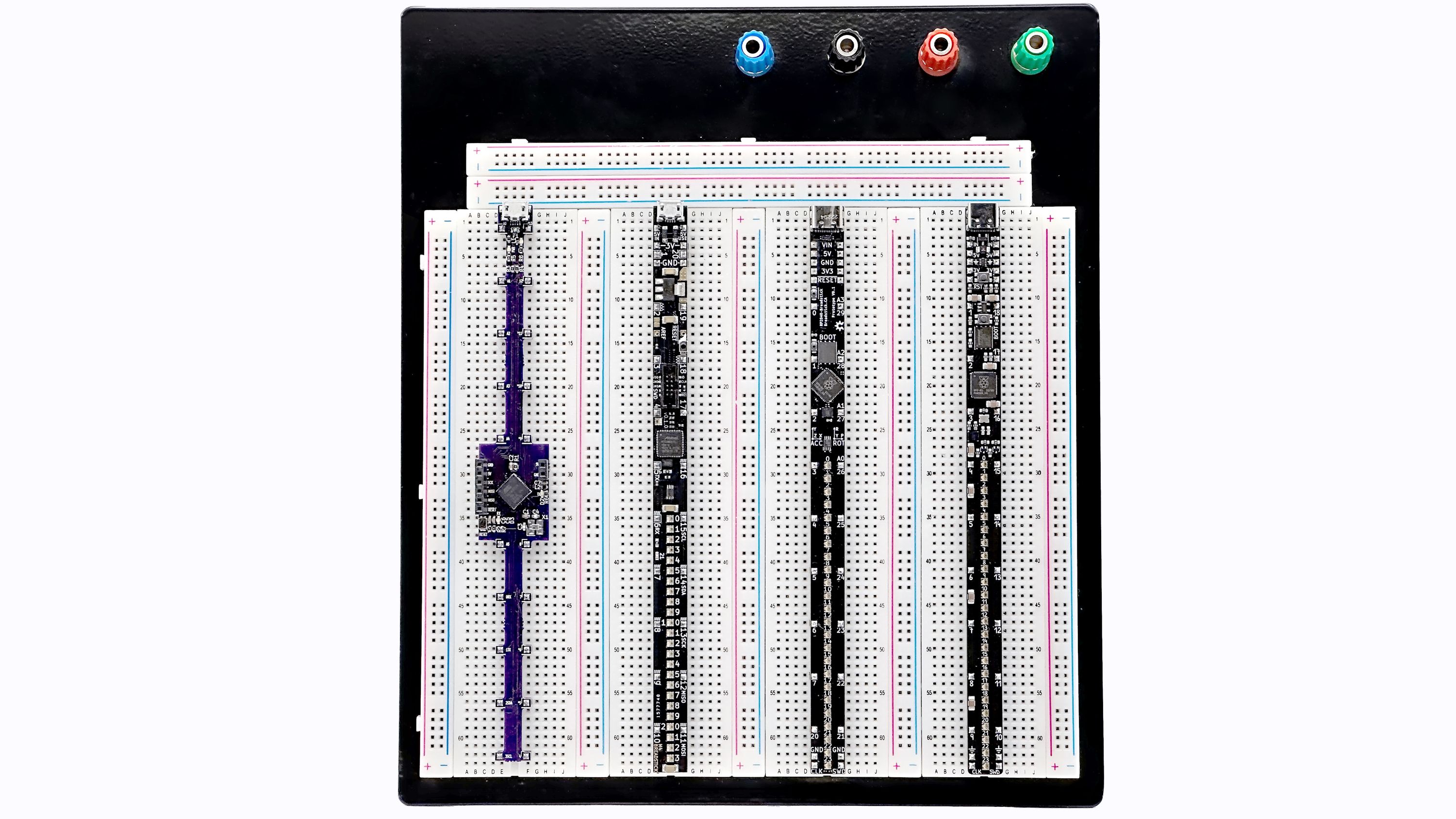Project update 2 of 9
The Evolution of Breadstick: 2017 - Present
by Michael RangenFirst, thank you so much for your support! We’ve only just kicked off our campaign and already reached 20% of our goal! We’re excited to get the first production batch of Breadsticks underway, so be sure to share the project with your friends to help us cross the finish line!
The Raspberry Breadstick was built on open-source principles; it wouldn’t be here today if it weren’t for all the amazing contributors to the open-source community who shared their designs so others could learn from them.
The first Breadstick was one of my earliest PCBs, I designed the board in 2017 by following the Arduino Leonardo design. I’ll never forget how excited I was when the boards arrived from OSHPark and how they came to life when the components were soldered in. It was far from perfect, I clearly misread the dimensions for the crystal, but it worked!
During the pandemic, I was laid-off from my electronics repair job and came across the 2021 Hackaday Prize and thought it would be fun to enter. I was really impressed with Adafruit’s CircuitPython boards, so I iterated on their ItsyBitsy M4-Express design, added LEDs, and shaped it into the M4-Breadstick. It was a finalist in Hackaday’s Wildcard Challenge that year and I was excited to see interest surrounding the project. Chips were really difficult to get during the pandemic, I had to buy dev-boards from Adafruit and use a hot-air tool to transfer chips in order to complete my prototypes.
When the Raspberry Pi foundation announced their RP2040 microcontroller, I kind of fell in love with it. This wonderful little chip has so much power and a built-in ROM image that allows it to show up as a flash drive, which makes it immune to becoming "bricked" like typical microcontrollers that would require an expensive programmer to re-flash them. It also has a cool PIO feature that opens up all sorts of possibilities! It’s readily available, runs CircuitPython, and has great open-source resources to work from. I added USB-C, a 6-Axis IMU, lots of memory, and made the first Raspberry Breadstick prototype. It was an eight-layer board with lots of really small components on both sides.
After showing it to the community and receiving lots of helpful feedback, I redesigned the board to be easier to manufacture by reducing the layer count to six, using larger components, and keeping all the assembly to a single side. The buttons are one of my favorite quality-of-life improvements, they are much easier to press and have a satisfying click.
With your support, we can bring the Raspberry Breadstick to makers all over the globe. Hopefully it’ll become their tool of choice when they need to knock out a quick prototype or proof of concept. I love breadboards and think they have an important place in classrooms, more so than any of the oversimplified alternatives I see educators reaching for today, but a classrooom full of messy breadboards can quickly become a nightmare for educators at any level. Let’s make some Breadsticks, build some cool things, and inspire some makers in the making. Your support makes all the difference!

















